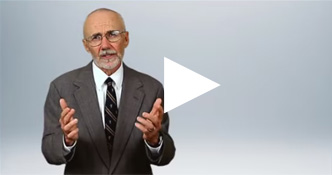How to Prevent 5 Common Problems in a Nonprofit Executive Search
A search for a nonprofit executive shares many commonalities with any personnel search, and most boards have several members who have hired many people in their personal careers. The distinctions in the hiring of an executive by a volunteer board create special process issues, and a specialized search firm is ready to address these. Poorly executed searches may result in hiring delays, poor selection, loss of good candidates, or a difficult start for the new executive.
A strong search process that is well articulated, adopted by the board, and enforced by leadership of the board prevents these problems. Since by design, a volunteer board relies on management and leadership from paid staff, there’s a natural gap when a board begins its search and the selected firm steps into that gap. Common process issues that we help address in advance and as they arise include:
- Timeline – Before the position is posted, a timeline with firm dates is adopted by the search committee. This allows board members to commit to and reserve time for the demanding interview process. Without this advance commitment, the search may be delayed (risking candidates) or interviews go forward without full board participation.
- Internal Candidates – A designated successor precludes a search, so when internal candidates arise, they present special circumstances. We work with these candidates carefully. Generally, the board should avoid any contact or informal screening and redirect any contact to the search consultant. These candidacies should be confidential, when possible, to reduce internal staff consternation and rivalries later.
- Candidate Review – The board should agree on who has authority to review and meet candidates. Every step of the review process informs candidates about the effectiveness of governance, and every step is the beginning of a long-term relationship for the eventual new executive. Does the search committee have sole authority to select finalists? May other board members or staff sit-in? Can a member who participates in half of the interviews vote? If staff meet candidates, do they share input with the board? These are the types of foreseeable process details that arise.
- Selection – Typically the full board interviews finalists, and by virtue of the bylaws has the authority to select an executive. A decision about who may attend and participate/observe is best made in advance so there are no last-minute requests to handle. Many boards routinely function by consensus and aren’t practiced in formal voting but need to use it for this important step. A motion should include details of the offer or grant authority to a board member or committee to finalize details. The voting process should be formal and recorded in minutes to be published in the record. A detail often neglected here in the “we got it done” sense of relief is the question of a second-choice candidate if the first choice declines.
- Hiring – This is clearly the formal beginning of an employment relationship, and in the best cases it is expedient (no 10-day negotiation process) and covers all the essentials (such as start-date and leave benefits.) Candidates sometimes request a post-offer conversation with the board chair or full board, and the leadership should accommodate this promptly.
Your search consultant is a valuable resource who has “seen it all (almost)” and is ready to help navigate troubled waters. But all boards and searches benefit from a clear process that anticipates every step – and just as important, a Search Chair with the authority and assertiveness to enforce the process. If your nonprofit could benefit from partnering with a search firm to hire its next executive director or CEO, you are welcome to contact us for a free 30-minute consultation.
By Bruce Scott
Senior Search Consultant
The Moran Company
“We Find Great Nonprofit Executives”
© 2022 The Moran Company
Posted in Executive Search Articles
Subscribe
Join more than 10,000 nonprofit professionals, community leaders and board members who receive e-mail updates from The Moran Company.






